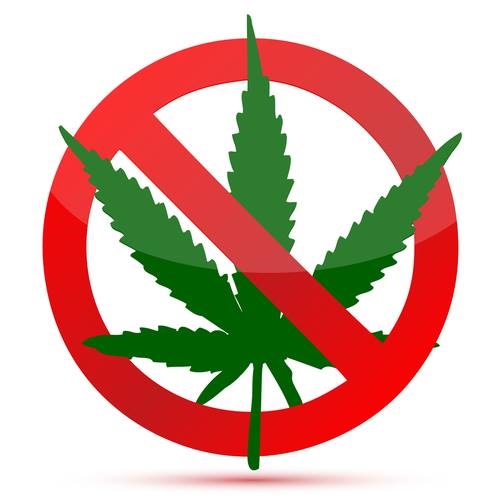You may think you’re OK to drive an hour or two after you get high on marijuana. Researchers and doctors say you’re not.
Pot affects you differently than alcohol, can linger in your system for longer, and it can be harder to figure out when it’s safe to drive. Research from the University of California, San Diego, and elsewhere suggests you should wait at least four hours before getting behind the wheel after smoking one joint. Wait even longer—at least six to eight hours—after ingesting a cannabis edible.
Marijuana is now legal for recreational use in roughly two dozen states, and many people are contemplating when they can drive safely. The evidence shows that making the wrong decision can have dire consequences.
The percentage of motor-vehicle crash fatalities involving cannabis rose to 21.5% in 2018 from 9% in 2000, according to a 2021 study in the American Journal of Public Health.
“It’s a big concern,” says Jane Metrik, a professor of behavioral and social sciences at the Center for Alcohol and Addiction Studies at Brown University School of Public Health. “There’s more people on the roads driving after they used cannabis or as they’re smoking or vaping.”
State laws vary.
Twelve states have zero tolerance laws where any amount of THC—the main psychoactive substance in cannabis—is illegal. Other states set a THC limit of anywhere from 2 to 5 nanograms per milliliter of blood.
Traffic accidents
THC impairs driving in numerous ways, researchers say, and differently than alcohol. People who are high tend to drive more slowly. The drug affects your ability to maintain position in a lane, reaction time, following distance and overall judgment, says Metrik.
It also reduces your ability to maintain divided attention, which is doing multiple things at the same time, like shifting attention from the dashboard to the road.
In Ontario, Canada, emergency department visits that resulted from cannabis-involved traffic injuries, nearly half of the people were admitted to the hospital and 30% were admitted to the intensive care unit, according to research published last year in JAMA Network Open.
A study published in 2022 in the journal JAMA Psychiatry asked nearly 200 cannabis users to either smoke THC or a placebo, and then compared their driving in a simulator. Roughly 45% to 50% of people in the THC group were classified as driving impaired compared with the placebo group, according to the research.
Researchers also asked smokers whether they thought they were OK to drive.
Thirty minutes after smoking, about half of the people were hesitant. After 90 minutes, they said the effects appeared to be wearing off and were more inclined to drive. But their driving performance in the simulator was just as bad after 30 minutes as it was after 90, says Tom Marcotte, co-director of the Center for Medicinal Cannabis Research at the University of California, San Diego, who was lead researcher on the trial.
“Even people who are very conscientious and say, ‘I’m not going to drive, I’m too stoned,’ start to believe it’s wearing off,” says Marcotte. “At least in our analyses, they’re still having issues.”
On average most participants started showing improvements from the effects of THC after 3.5 hours, says Marcotte, and were back to normal 4.5 hours later.
When is it safe?
Marcotte recommends waiting four or more hours after you smoke THC before getting behind the wheel.
Other recommendations are more conservative. Inhalation of marijuana may impair driving skills for about six to eight hours, while edibles can impair them for eight to 12 hours, according to guidelines published in 2022 in the International Journal of Drug Policy.
THC is more unpredictable than alcohol and some other drugs, says Guohua Li, a professor of epidemiology and anesthesiology at Columbia University Vagelos College of Physicians and Surgeons in New York.
Regular cannabis users appear to develop a tolerance, with simulator studies showing their driving isn’t as affected as much as people who use cannabis less often, says Ashley Brooks-Russell, an associate professor and director of the Injury and Violence Prevention Center at the University of Colorado Anschutz Medical Campus.
“People who use occasionally are driving worse,” she says. “They tend to speed a little bit more, weave in their lane a little more. And the daily users tend to slow down.”
While alcohol is a depressant and cocaine is a stimulant, THC can be either depending on the individual, or it could act as a hallucinogenic drug, says Li.
The body processes alcohol and THC differently. Alcohol is metabolized in the liver; every two hours the liver metabolizes about 15 milligrams of ethanol, which is roughly the amount of alcohol in a bottle of beer or glass of wine.
THC is released into the bloodstream slowly, so it can stay in your body for days or even weeks, says Li.
Many drivers test positive for both cannabis and alcohol, which researchers say is especially dangerous.
Testing
It’s proved difficult to develop a reliable test to measure how cannabis has impaired someone’s driving.
The turnaround on blood tests is long, and it’s intrusive. Blood tests also aren’t a reliable indicator of driving impairment because frequent users can test positive days or even weeks after use, when they’re not impaired. Conversely, infrequent users may test below a legal limit and still be impaired.
There are oral fluid tests that can be done roadside with a saliva swab, but their reliability isn’t fully clear. Researchers are also looking at using breathalyzers, table-based cognitive tests, devices that examine pupil dilation, and devices that measure electrical activity in the brain.
“I would say we’re still years away from having a device deployed widely in the field and legally permissible,” says Li.
Write to Sumathi Reddy at Sumathi.Reddy@wsj.com


